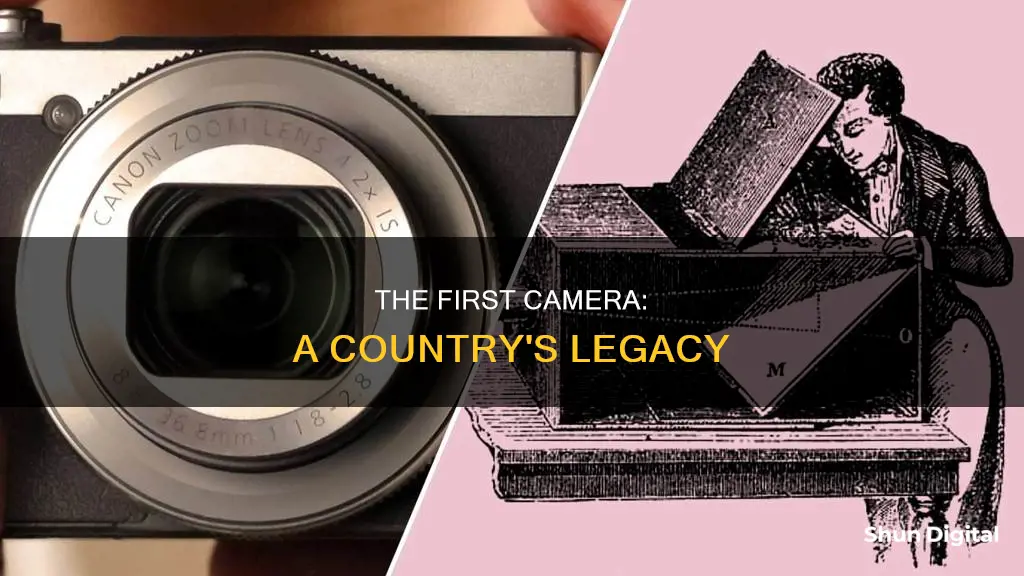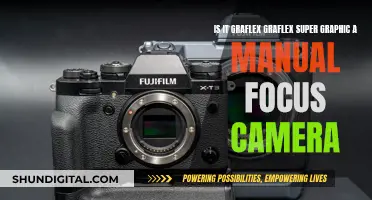
The history of the camera is a long and fascinating one, spanning centuries and involving numerous inventors and innovators from across the globe. The evolution of the camera can be traced back to the ancient concept of the camera obscura, which was known to scholars and philosophers as early as the 5th century BC. However, it wasn't until the 19th century that the first permanent photograph was captured, marking a pivotal moment in the history of photography and paving the way for the modern cameras we know today.
The first camera, as we recognise it, was invented in 1816 by French inventor Joseph Nicephore Niepce. His simple camera used paper coated with silver chloride, producing a negative image. Niepce's experiments with camera obscura and other techniques eventually led to the creation of the first permanent photograph in 1826, capturing the view from his window in Le Gras, France. This groundbreaking achievement set in motion a series of discoveries and inventions that revolutionised the way we capture and view the world around us.
The history of camera technology is filled with notable milestones, including the development of daguerreotypes, calotypes, flexible roll film, and eventually, digital cameras. Each advancement built upon the previous one, improving image quality, reducing exposure times, and making photography more accessible to the general public. Today, cameras are an integral part of our daily lives, from the smartphones in our pockets to the high-definition DSLR cameras used by professionals. The journey from the first cameras to modern technology has been a remarkable one, and it continues to evolve even today.
| Characteristics | Values |
|---|---|
| --- | --- |
| Country of origin | France |
| Inventor | Joseph Nicéphore Niépce |
| Year invented | 1816 |
| First photograph | 1826 |
What You'll Learn

The first camera was invented in 1816 by Joseph Nicephore Niepce
Niepce became interested in using light-sensitive materials to produce images directly onto printing plates or stones around 1816. He experimented with various substances, such as silver chloride-lined paper, and created what is considered the first permanent photograph in 1826 or 1827. This photograph, which required an exposure time of about eight hours, captured the view from the window of his home in France.
Niepce called his process heliography, meaning "sun drawing" or "drawing with the sun," as it involved using light to create images. He produced the first image of nature in May 1816, which was a view from a window. However, this image was a negative, and it vanished because the coated paper used became completely black when exposed to broad daylight.
Niepce continued to refine his process, experimenting with different compounds and techniques to obtain positive images and fix them. He eventually succeeded in creating the world's first permanent photographic image, which was a contact-exposed copy of an engraving. This image was later destroyed when Niepce attempted to make prints from it.
Niepce's work laid the foundation for modern photography, and he is recognized as the inventor of the first camera, paving the way for further developments and improvements.
Vivint Doorbell Camera: Where's the Battery?
You may want to see also

The first photograph was taken in 1826 by Niepce
The first photograph was taken in 1826 by Joseph Nicéphore Niépce, a French inventor and one of the earliest pioneers of photography. Niépce developed heliography, a technique he used to create the world's oldest surviving product of a photographic process.
Niépce was born in Chalon-sur-Saône, Saône-et-Loire, France, and his father was a wealthy lawyer. He studied science and the experimental method at the Oratorian college in Angers, where he adopted the name Nicéphore in honour of Saint Nicephorus, the ninth-century Patriarch of Constantinople. After graduating, he worked as a professor at the college.
Niépce served as a staff officer in the French army under Napoleon but resigned due to ill health. He then married Agnes Romero and became the Administrator of the district of Nice in post-revolutionary France. In 1795, he resigned as administrator to pursue scientific research with his brother Claude. They returned to their family's estates in Chalon in 1801, where they managed the estate and raised beets and produced sugar.
In the mid-1820s, Niépce used a primitive camera to produce the oldest surviving photograph of a real-world scene. He called his process "heliography", which means "sun drawing". He used a camera obscura, a popular optical instrument at the time, to capture an image on a pewter plate coated with bitumen of Judea, an asphalt derivative of petroleum. The plate was exposed to light for eight hours, after which it was washed and dried, revealing the image. This image, taken from the window of his home at Le Gras in France, is believed to be the first photograph ever taken.
Niépce travelled to England in 1827 to visit his brother Claude, who was seriously ill. While there, he presented a paper on his invention to the Royal Society, but his findings were rejected as he chose not to reveal the full details of his method. In 1829, he formed a partnership with Louis Daguerre, a French artist who was also seeking a means of creating permanent photographic images. Together, they developed the physautotype, an improved process that used lavender oil distillate as the photosensitive substance. Niépce died in 1833, and Daguerre continued to experiment, eventually developing the daguerreotype process, which used a silver-plated sheet of copper treated with iodine vapour to produce images.
Charging the TG-4: Battery Power for Your Olympus Camera
You may want to see also

The daguerreotype was the first mass-produced camera
The process of creating a daguerreotype image involved polishing a sheet of silver-plated copper to a mirror finish, treating it with fumes to make its surface light-sensitive, exposing it in a camera for as long as necessary, making the resulting latent image visible by fuming it with mercury vapour, removing its sensitivity to light by liquid chemical treatment, rinsing and drying it, and sealing the result behind glass in a protective enclosure.
The daguerreotype process was almost completely superseded by 1856 with the emergence of new, less expensive processes, such as the ambrotype (or collodion process), which yielded more readily viewable images. However, there has been a revival of the daguerreotype since the late 20th century by photographers interested in making artistic use of early photographic processes.
Daguerre's camera technology had a flaw: the pictures vanished quickly. This was corrected by American inventor Alexander S. Wolcott, who invented the mirror camera. Instead of a negative image with reversed colours, this camera created a positive impression.
Daguerre's camera and method became commercially successful almost immediately. They were widely used because of their ability to produce images fast and in great detail. Even after he died in 1851, Daguerre became wealthy and recognised worldwide. Today, many daguerreotypes can still be found in family records, museums, and libraries.
Outdoor Camera Options: Battery-Powered Security Solutions
You may want to see also

The first roll film camera was The Kodak, created in 1888
The Kodak camera was a simple box camera with a fixed-focus lens and a single shutter speed. It was pre-loaded with a 100-exposure roll of flexible film, which gave circular images 2 5/8" in diameter. After taking 100 pictures, the user would send the whole camera back to Kodak for film processing and reloading, at a cost of $10. The camera, loaded with a fresh roll of film, was then returned with the negatives and mounted prints.
The Kodak was designed with the novice photographer in mind and required no adjustments or prior photographic knowledge to use. The photographer simply armed the shutter by pulling up on the string, pointed the camera at the subject, and pressed the shutter release. These steps were clearly explained in the camera's instruction manual, along with the slogan, "You press the button, we do the rest."
The Kodak camera was a significant innovation that revolutionised the world of photography, making it accessible to the average consumer. It marked the beginning of a new style of photography that was informal, personal, and fun, capturing everyday moments and memories.
Mastering the Art of Hiding Pins in Camera Raw Adjustment Brush
You may want to see also

The first camera phone was the Kyocera VP-210, developed in 1999
The history of the camera is a long and fascinating one, dating back centuries before the first camera phones we see today. The camera obscura, meaning "dark room" in Latin, is considered the first camera ever created, with the oldest written records of this idea attributed to Han Chinese scholar Mozi around 470 to 391 BC. This device used a small aperture to project an inverted image onto a surface, and it laid the foundation for the development of modern cameras.
Fast forward to the 19th century, and we see significant advancements in photographic technology. The first photographic camera was developed in 1816 by Joseph Nicéphore Niépce, a Frenchman. This camera produced the first permanent photograph in 1826, capturing the view from his window in an eight-hour exposure. However, it wasn't until 1829 that Niépce partnered with Louis-Jacques-Mande Deguerre to create the daguerreotype, which offered practical exposure times.
The evolution of camera technology continued, with George Eastman introducing the Kodak No. 1 camera in 1889, making photography accessible to ordinary people. This led to the development of film cameras and, eventually, digital cameras.
Now, let's turn our attention to the first camera phone. In May 1999, the Japanese company Kyocera released the VP-210, considered the first commercially available mobile camera phone. This phone had a forward-facing 0.11-megapixel camera and could store up to 20 photos. It even had an integrated stand for taking selfies, a trend that would become popular in the early 2000s. The phone was considered "revolutionary" at the time and retailed for 40,000 yen (approximately US$325 in 1999).
While the Kyocera VP-210 paved the way for camera phones, it's important to mention that there were earlier experiments and prototypes. In 1993, Daniel A. Henderson created the Intellect, a wireless picture phone technology. In 1995, Apple also shared a design for a video phone that combined a camera and display. However, these concepts never made it to market.
In summary, the Kyocera VP-210 holds a significant place in the history of camera phones, bringing the concept to the general public and setting the stage for the integration of photography and mobile communication that we see today.
Restarting Li-ion Camera Battery: Quick Guide
You may want to see also
Frequently asked questions
Camera obscura, meaning "dark room" in Latin, is a natural optical phenomenon where an inverted image is projected through a small aperture. The Han Chinese philosopher Mozi (c. 470 - c. 391 BC) was the first to document this principle.
The first camera was invented in 1816 by French inventor Joseph Nicéphore Niépce.
The oldest photograph preserved is a landscape taken by Joseph Nicéphore Niépce in 1826 at Le Gras, France. The image took at least eight hours to produce.
The first camera brand is Kodak, created by George Eastman in 1888. The first camera for the masses, it used a roll of paper (later celluloid) able to hold 100 pictures.
The launch of Kodachrome film in 1935 by Kodak popularised colour photography.







